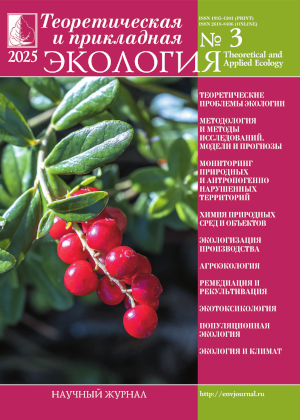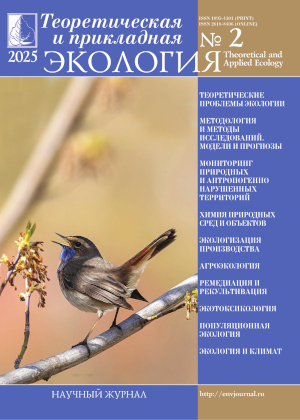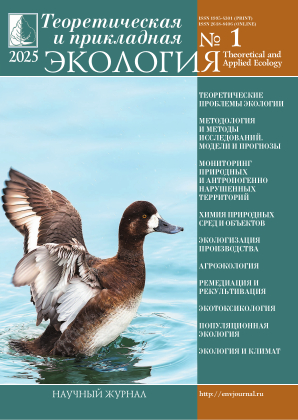 ISSN 1995-4301
ISSN 1995-4301(Print)
ISSN 2618-8406
(Online)
Online version of the journal
|
Zoobentos of the Severnaya Dvina River |
||||
| M.A. Studenova, I.I. Studenov, D.V. Chupov | ||||
| Section: Population ecology |
||||
| The Northern Branch of All-Russian Research Institute of Fisheries and Oceanography (FSBNU VNIRO) began comprehensive research on zoobenthos in the mainstream of the Severnaya Dvina River in 1995. Systematic studies of zoobenthos at the Severnaya Dvina River for the first time made it possible to obtain the most complete information about the taxonomic composition of the invertebrates, the number and frequency of taxons across different sections of the mainstream, the number and biomass of each taxon. As part of the zoobenthos for the entire study period (1995–2019), 20 taxons belonging to 6 types and 8 invertebrates classes were discovered. The average number of invertebrates taxons found in samples for the entire study period was 9 in the upper and middle parts of the mainstream of the Severnaya Dvina River, 8 in the lower parts, varying in significant ranges from 2 to 15 in different years. Every year at all stations in the samples there were oligochaetes and larvae of chironomids (or lake flies), which dominated in frequency. The lowest frequency of occurrence (5.3% each) was found in the upper part of the mainstream of the Severnaya Dvina river for the larvaes of stoneflies and springtail, in the middle parts – 5.6% for gastropods, leeches, water bugs, beetle larvaes and turbellarians. In the lower part of the mainstream of the Severnaya Dvina water spiders, water bugs and beetle larvae were rarely found in samples (5.3% each). The number of invertebrates in the mainstream of the Severnaya Dvina River varied within very wide limits, averaging 3052 units/m2 for the entire observation period. The average biomass of invertebrates in the mainstream of the Severnaya Dvina rive amounted to 2.35 g/m2. The biomass base was also formed by oligochaetes and larvaes of chironomids. Obviously, interannual changes in the number and biomass of zoobenthos and changes in these parameters along the length of the river are more associated with the hydrological features of each year of observations in the Severnaya Dvina River and its largest tributaries than with the influence of human activity. Clarification of the relationship of hydrological parameters, and above all – the water content of the river year to year requires additional research. | ||||
| Keywords: the Severnaya Dvina River, zoobenthos, abundance, biomass |
||||
| Link | ||||
   |
||||
| Article published in number 2 for 2023 DOI: 10.25750/1995-4301-2023-2-147-154 |
||||
|
|
36, Moskovskya street, Kirov, 610000, Editorial Board "Theoretical and Applied Ecology." Phone/fax: (8332) 37-02-77 e-mail: envjournal@vyatsu.ru The journal was founded in 2007 |
||||||




 Select viewing options
Select viewing options